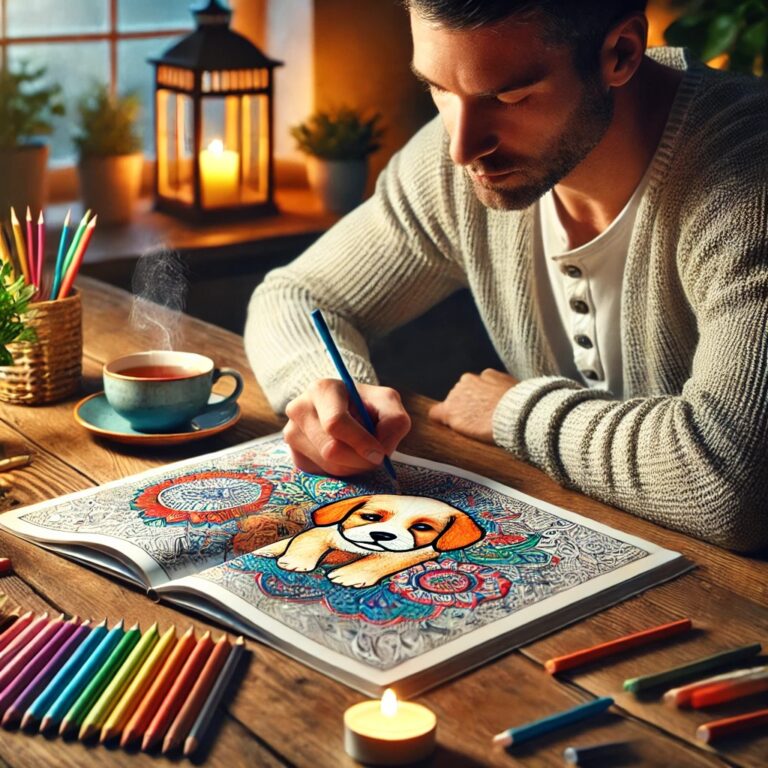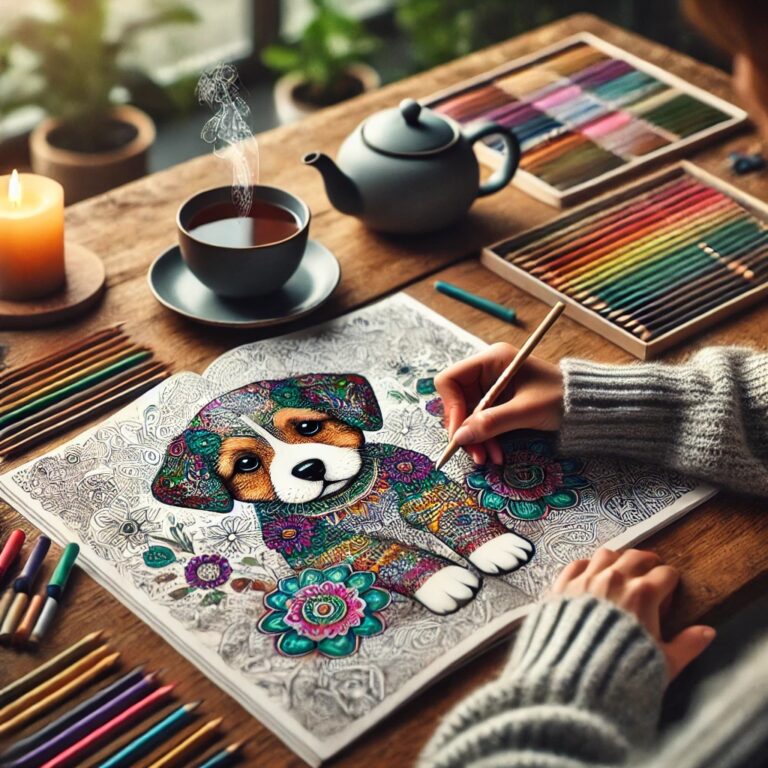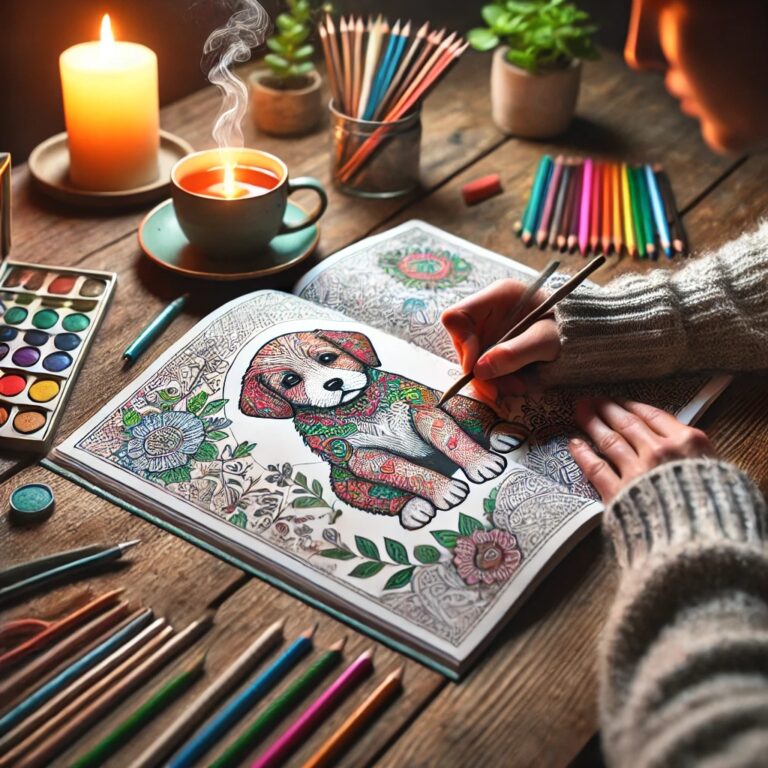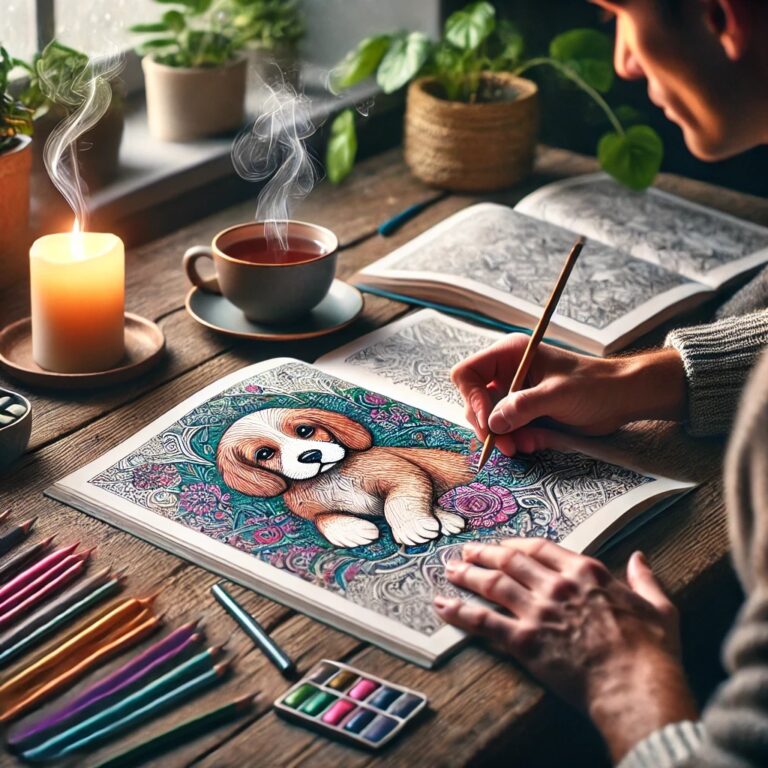Discover how simple creativity can quiet pain and reset your nervous system.
Pain—whether chronic or occasional—affects more than your body. It wears down your energy, clouds your mind, and disconnects you from joy. Most people turn to medication, ice packs, or heating pads. But what if science pointed to something much simpler?
Coloring for pain relief is gaining attention in both wellness and medical circles. No, it’s not just a childhood pastime. The act of coloring can shift how your brain processes discomfort, lower stress, and engage areas of your brain that naturally soothe pain.
In this post, we’ll break down the science behind coloring and pain relief so you can understand exactly why this works—and how to make it part of your own healing routine.
Why Traditional Pain Management Isn’t Always Enough
Let’s start with the problem. Millions of adults suffer from chronic pain due to conditions like:
- Arthritis or joint degeneration
- Fibromyalgia
- Back and neck issues
- Neuropathy or nerve damage
- Autoimmune disease
- Migraines or TMJ
Treatments usually focus on medication, physical therapy, or surgery. While those tools can help, they often overlook something essential—your brain’s role in pain perception.
Pain isn’t just physical. It’s also processed in your nervous system, thoughts, and emotions.
That’s where coloring steps in.
How Coloring Affects the Brain
When you color, your brain doesn’t just zone out. It lights up.
Let’s explore what happens neurologically during coloring:
1. Coloring Shifts Focus and Closes the “Pain Gate”
Your brain can’t entirely focus on two things at once. The Gate Control Theory of Pain says that the brain sends fewer pain signals when your attention is directed away from pain.
✔️ When coloring, your brain’s sensory pathways are occupied with shapes, lines, and color coordination.
This “closes the gate” to pain signals, naturally reducing discomfort.
2. It Activates the Parasympathetic Nervous System
Coloring slows your breathing and heart rate, signaling your parasympathetic nervous system—the part responsible for rest and healing.
✔️ As you color, cortisol (your stress hormone) decreases, and calming hormones like serotonin and dopamine increase.
This relaxation response helps reduce muscle tension and lowers inflammation, contributing to less pain.
3. It Triggers Dopamine Release
Dopamine is your brain’s “feel-good” chemical. Every small decision you make—what color to use, how to fill the space—gives you a sense of accomplishment.
✔️ That small success boosts dopamine, which reduces pain perception and improves your mood.
The Emotional Side of Pain: Coloring Helps There, Too
Chronic pain often leads to emotional challenges. Anxiety. Depression. Isolation. Hopelessness.
Coloring helps relieve emotional strain in several ways:
1. It Creates Predictable Structure
Pain makes your world feel chaotic. Coloring pages offer structure, consistency, and a start-to-finish flow that gives you a sense of control.
✔️ Even a simple task like completing a page can bring back a sense of capability and calm.
2. It Offers Safe Expression
Sometimes, words aren’t enough. Pain isn’t always something you can describe clearly.
Coloring allows you to express frustration, sadness, or even hope without saying a thing.
✔️ Each stroke becomes a form of release.
What Science and Research Say
This isn’t just theory. Several studies back up the link between creative expression and pain relief:
✅ A study published in Art Therapy: Journal of the American Art Therapy Association showed that just 45 minutes of creative activity significantly reduced cortisol levels in participants.
✅ A 2020 clinical trial found that art therapy reduced perceived pain intensity in cancer patients by 34%.
✅ Neuroscientists at Drexel University found that coloring or drawing for 30 minutes improved mood and activated reward pathways in the brain.
These aren’t isolated results. There’s growing evidence that creative focus, like coloring, supports mind-body healing.
Coloring and Neuroplasticity: Rewiring Pain Pathways
Something exciting: Coloring can help retrain your brain’s pain response.
The brain has a superpower called neuroplasticity. This means your thoughts, emotions, and attention can reshape how pain is experienced.
✔️ When you color consistently, you’re teaching your brain that not all attention needs to go to pain.
✔️ You’re reinforcing new patterns prioritizing peace, focus, and calm.
Over time, this builds a more resilient response to discomfort.
How to Use Coloring for Real Pain Relief
Ready to try it? Here’s how to get the most benefit:
1. Set Up a Pain-Friendly Space
✔️ Choose a comfortable chair with support
✔️ Add a warm blanket or heating pad
✔️ Keep soft lighting to avoid eye strain
✔️ Play calm music if it helps you relax
Make your space as nurturing as possible.
2. Choose the Right Tools
✔️ Use bold-lined, low-detail pages if you’re dealing with fatigue or joint pain
✔️ Pick colored pencils with soft grips for sore hands
✔️ Try puppy-themed pages like the ones at MaxwellPawsworth.com for a dose of joy and comfort
3. Don’t Rush. Focus Slowly.
This isn’t about creating perfect art. It’s about being present with each color, each motion, each breath.
✔️ Start with 10–15 minutes a day.
✔️ Focus on how your body feels before and after.
✔️ Use that time as your daily self-care practice.
Bonus Tip: Track Your Progress
Keep a simple pain-and-coloring log.
📝 Write how you feel before coloring.
📝 Note your mood and pain level after.
Over time, you’ll start to notice real patterns. More peace. Less tension. And most importantly—more control.
Final Thoughts: Why This Matters
Pain steals more than comfort. It steals your focus, your energy, and sometimes your hope.
But science shows that something as simple as coloring can offer a powerful shift. It brings your nervous system back to balance. It teaches your brain new ways to respond. And it gives you a joyful, creative way to reclaim your peace.
Start today if you’re ready to experience the science behind coloring and pain relief.
At MaxwellPawsworth.com, we design cozy, cute, and calming coloring books to support your journey. Filled with sweet puppies and thoughtful pages, our books are perfect for anyone looking to feel better—one page at a time.
Stay Connected with Maxwell Pawsworth! 🐶✨
Love cozy coloring adventures? Join the Maxwell Pawsworth Newsletter for exclusive updates, sneak peeks at new releases, and special surprises! 🖌️🎨
📩 Sign up today and never miss a page! Click HERE to join.







